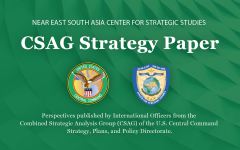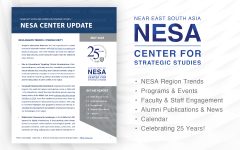The Syrian Situation and its Impacts on Refugees and Internally Displaced Persons
July 23, 2021 2021-07-23 19:17The Syrian Situation and its Impacts on Refugees and Internally Displaced Persons
The Syrian Situation and its Impacts on Refugees and Internally Displaced Persons
By: LTC Marco PRANZO, ITA Army, CSAG CCJ5
23 July 2021
Introduction:
In 2020 the conflict in Syria was further exacerbated by the country’s worst economic crisis since 2011, international sanctions, and the COVID-19 pandemic. In this challenging socio-economic situation, a so-called oligopoly, encompassing Syrian and non-Syrian entities has formed. For years, the entities that make up the oligopoly have accumulated wealth, power, and social status; regardless of the geopolitical, ideological, presumed, or real enmities of the community.
It has been 10 years since protests against the government of President Bashar al-Assad, which erupted on March 15, 2011 in the wake of the so-called Arab Spring, quickly ignited the fire of the civil war. After a decade of bloody clashes, Assad’s government is still in its place in an unpacified, divided, and economically devastated country. Although fighting has subsided in many areas, the conflict does not appear to be close to a political solution. The Syrian conflict has caused a severe humanitarian crisis and inflicted immense suffering on the Syrian people. Human rights and international humanitarian law are not being respected, and the situation remains precarious.
The severe situation in Syria was highlighted by General Kenneth McKenzie in an April, 2021 speech. The CENTCOM Commander said that the radicalization of children in camps in Syria for the Islamic State represents the greatest threat to the region. The need to curb the spread of the group’s ideology can only be applied through the repatriation of the children. General McKenzie described the horrendous conditions of the al-Hol camp, which houses some 65,000 people, as a “tactical problem” that should worry the United States and other actors, but stressed the spread of ISIS ideology as a “more strategic problem.”
The difficult economic situation is accompanied by social problems as evidenced by a recent assessment made by the International Committee of the Red Cross (ICRC) in Geneva on the humanitarian crisis in Syria ten years after hostilities started. According to the ICRC, the needs in Syria and neighboring countries remain immense, and assistance to displaced persons, refugees, and people affected by poverty is still essential. According to reports from the Syrian Observatory for Human Rights (SOHR), the IDP (internally displaced person) camps’ issue could become a “time bomb,” capable of unleashing a wave of chaos, especially in northeastern Syria. Al-Hol, located in the far South-East of Hasakah, is placed under the control of the Kurdish authorities affiliated with the international anti-ISIS coalition. The site is home to more than 65,000 people, including over 11,000 family members of suspected ISIS fighters of various nationalities, including tens of thousands of women and children from Syria and Iraq. These figures represent a considerable burden for the Kurdish forces, who often also have to deal with crime incidents and numerous escape attempts.
Key Points:
- A critical game is being played in the Northeast of Syria to divide energy and territorial resources. Internal and external actors compete to secure a slice of the profits in the short, medium, and long term.
- Idlib and the Syrian Northwest are not only the home of millions of displaced people and thousands of jihadist militiamen. The city is now the land of opportunity for Turkey and its local customers, enriching themselves thanks to territorial fragmentation and humanitarian emergencies.
- The reopening of internal trade crossings will be of immediate benefit to ordinary people and send a clear political signal: Russia and its ally Assad are stability players and protect the interests of the Syrians.
- The Al-Hol camp should not only be considered as a tactical problem, but a strategic one.
- Foreign countries should comply with the Autonomous Administration’s repeated calls to repatriate detainees not charged with a crime, prioritizing the most vulnerable.
The opinions and conclusions expressed herein are those of a number of international officers within the Combined Strategic Analysis Group (CSAG) and do not necessarily reflect the views of United States Central Command, not of the nations represented within the CSAG or any other governmental agency.







